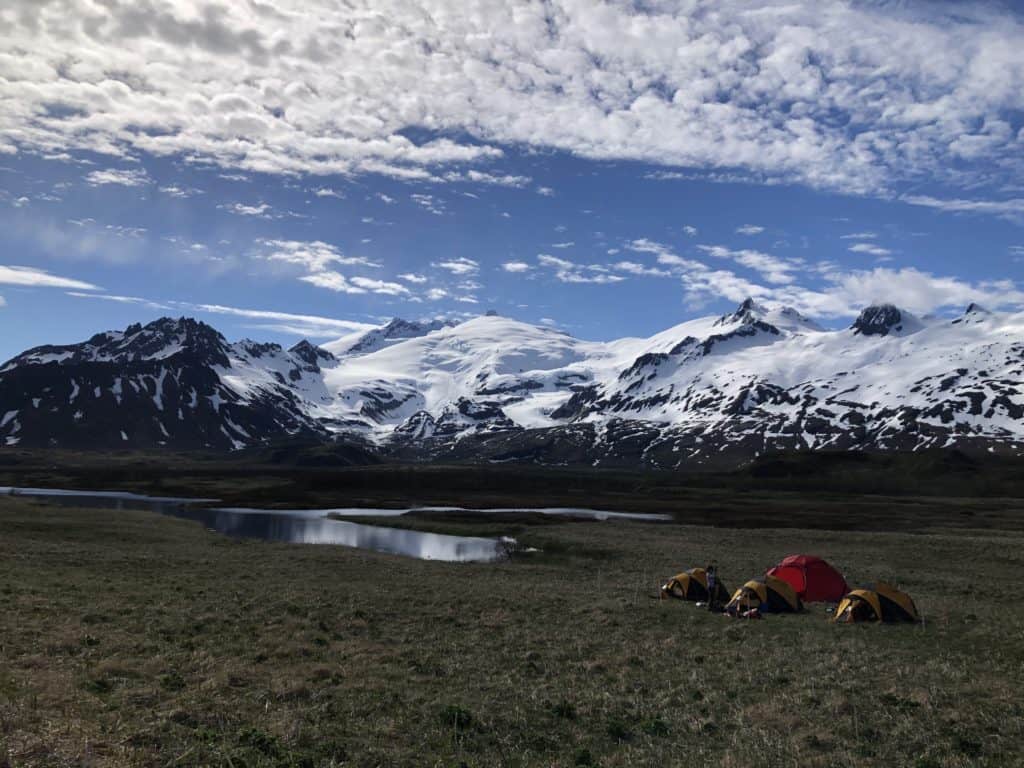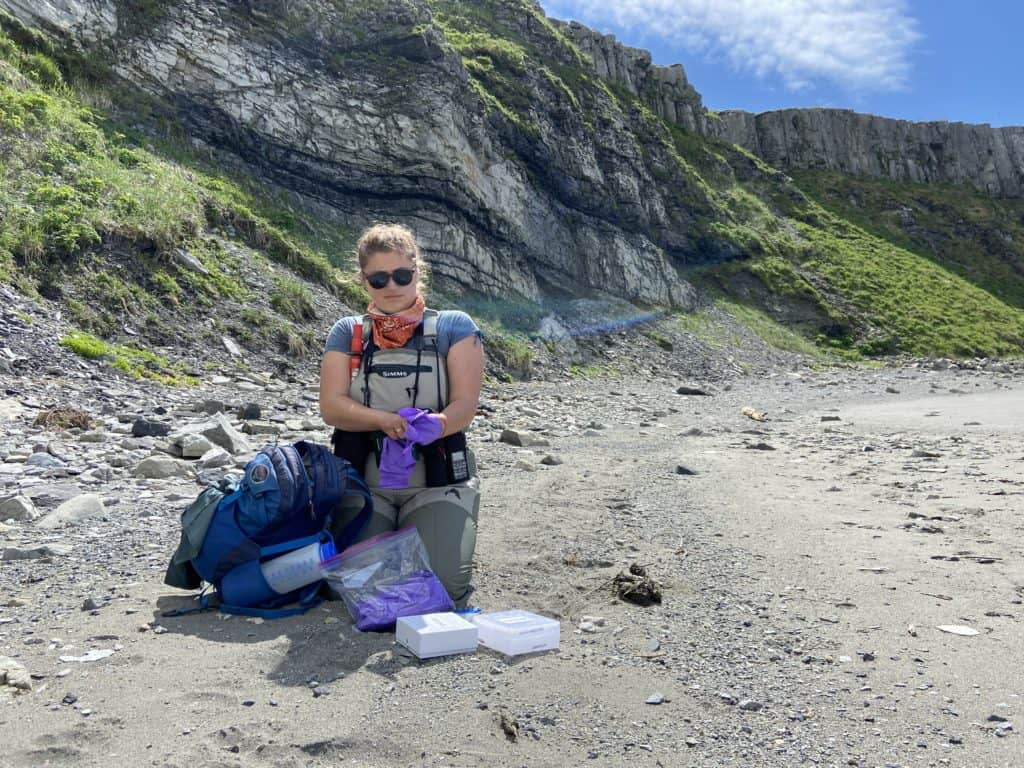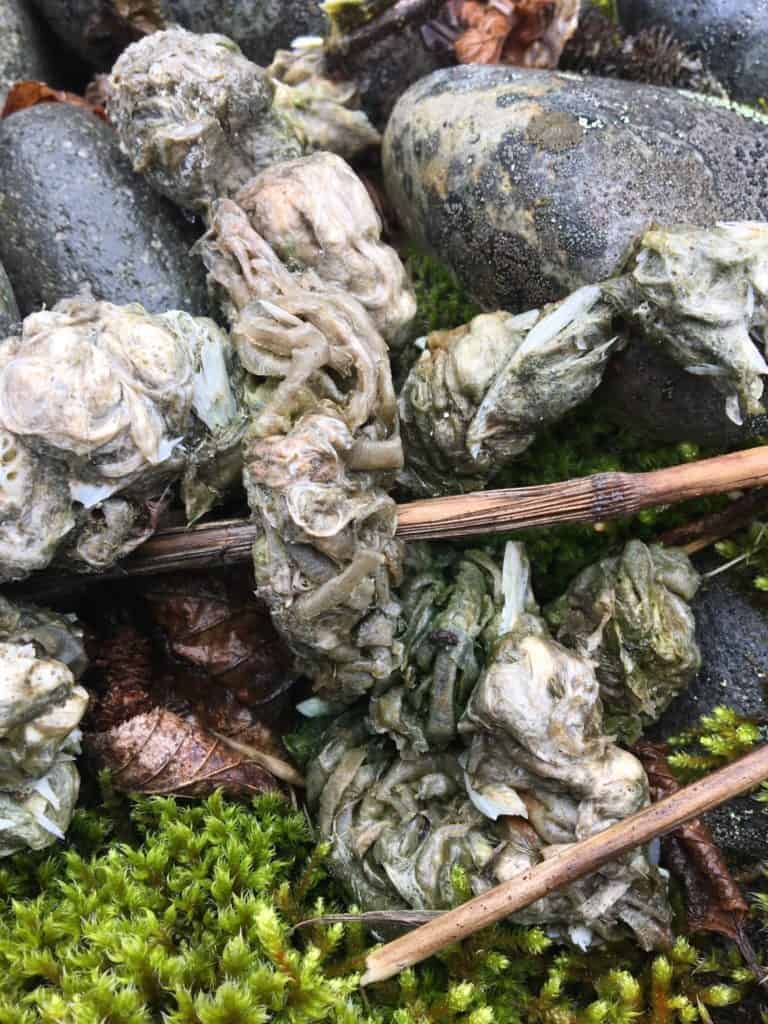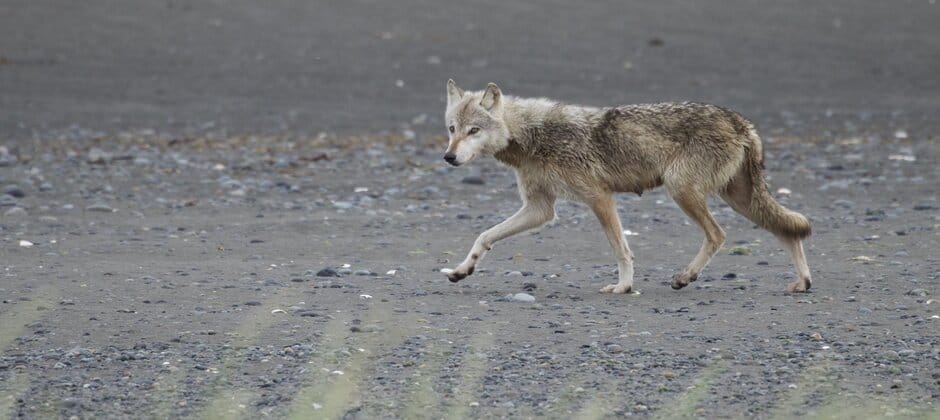Share this article
TWS2021: Katmai wolves prey on sea otters
The mountains and oceans surrounding Katmai National Park and Preserve keep it isolated from much of the rest of Alaska. The geography makes for a scenic view, but it also may have implications for a gray wolf population that lives along its coasts.
Ongoing research shows that Katmai wolf packs prey on sea otters (Enhydra lutris kenyoni) and other marine life at levels unusual for gray wolves (Canis lupus).
“We have a terrestrial top predator eating a marine top predator,” said TWS member Ellen Dymit, a PhD student at Oregon State University.
In ongoing research presented at The Wildlife Society’s virtual 2021 Annual Conference, Dymit and her colleagues have been analyzing wolf feces for DNA. They have also been collecting wolf fur using hair snares and capturing their activity using trail cameras.

Ellen Dymit and her team at camp on the Katmai coast. Credit: Ellen Dymit
Scat analysis has revealed that Katmai wolves are eating a large number of marine mammals. About a third of the wolf scats had sea otter DNA—a level Dymit recalls “unprecedented.” She said that the high levels of consumption are just another sign that the populations of these marine mammals in the area have reached healthy levels
The wolves weren’t just scavenging otter carcasses—the researchers witnessed at least one case of them actively hunting live sea otters. Dymit said they may be among the first researchers to witness this hunt in Alaska.
In the instance they witnessed, a female wolf happened upon an otter basking on a rock in shallow water at low tide. The wolf’s packmates soon joined, slowly surrounding the otter, until its escape to deeper water was blocked off. “It’s all about trapping them and surprising them,” Dymit said. Sea otters face some danger from killer whale (Orca orca) predation in other parts of southwestern Alaska, but Katmai otters don’t seem to be used to the danger posed by land predators yet, Dymit added.
The wolves do the same thing with seals, waiting until low tide when it’s harder for the seal to escape. “They’ll just drag it farther up the beach, so it can’t get out of the water,” she said.

Ellen Dymit prepares to collect a scat sample. Credit: Kelsey Griffin
It’s also possible, though not yet observed, that wolves are taking advantage of sea otter pups when the mothers leave them floating in the shallows to go forage in deeper water. Since sea otters have pups all year round, it’s possible that the wolves, which are fairly good swimmers themselves, rely on pups for part of their diet.
Sea otters weren’t the only marine mammals found in wolf scat. Researchers also detected three species of cetaceans—they actually witnessed wolves eating beached whale carcasses alongside 13 brown bears (Ursus arctos) in one case.
But they also found the remains of harbor seals (Phoca vitulina) and Steller sea lions (Eumetopias jubatus) in the wolf scat. Plus, the wolves ate fish, including sculpin, salmon, starry flounder (Platichthys stellatus), halibut and sand lance. While there have been observations of wolves fishing, the diversity and extent of fish consumption was unexpected, Dymit said.
In some strange cases, the team also found scat that was completely made up of the tubes of northern feather duster worms, specifically (Eudistylia vancouveri). Wolf scat also showed evidence of crabs, mussels, sand fleas and other invertebrates.

Wolf scat nearly entirely filled with northern feather duster worms. Credit: Ellen Dymit
This information is revealing more about wolves in the Gulf of Alaska, Dymit said. Other researchers have witnessed also witnessed brown bears preying on sea otters there. The fact that both of these predators are preying on sea otters points to the fact that the population of the latter is recovering in this area faster than in other parts of the Pacific, partly thanks to reintroduction efforts.
The Katmai coast is about 500 miles long. Researchers believe the area hosts at least six wolf packs—a very high density compared to wolves in other areas. The high concentration could mean that whatever washes up on the beach is enough to support these high numbers. It could also suggest a breakdown of the wolves’ territorial borders.
Dymit said she doesn’t think wolf predation will affect sea otter populations in the Gulf of Alaska at this point. “Sea otter recovery will be limited by prey availability more than anything else,” she said.
But it does change the way that wildlife agencies should look at wolf management. “Everybody thinks of wolves as these deer killing machines, and this is a source of wolf hatred,” she said.
Most agencies primarily manage wolves with regard to their effect on deer. But on the Katmai Coast, which has a low density of moose but no deer, this assumption that wolves need deer is wrong, she said.
“Maybe as sea otters recover in the Gulf of Alaska, it’s restoring this relationship between wolves and otters that existed pre-fur trapping,” Dymit said.
Header Image: Wolves on the Katmai coast behave differently from many other packs. Credit: Rylee Jensen








